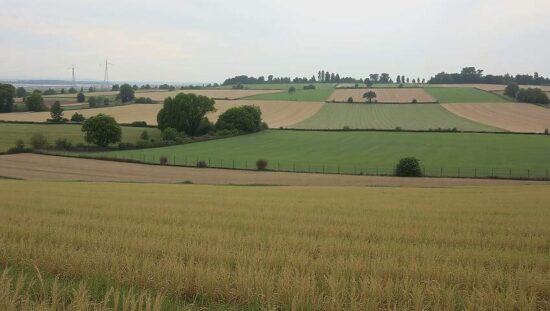Agricultural producer prices in Germany experienced a notable rebound in August 2025, rising 2.2% compared to August 2024, reversing a downward trend observed in prior months. After declines of -0.3% and -1.1% in July and June respectively, the latest data from the Federal Statistical Office (Destatis) signals a complex and potentially concerning shift within the sector. However, the overall increase masks a stark divergence within agricultural categories.
The data reveals a persistent and widening gap between the fortunes of producers of plant-based versus animal-derived products. Prices for plant-based goods plummeted by 12.7% year-on-year, driven primarily by a drastic 52.5% decrease in the price of potatoes – a trend that, while moderating somewhat from previous months, remains deeply problematic for potato farmers. Vegetable prices also fell by 2.9%, with significant drops seen in lettuce (-27.4%), cabbage (-4.3%) and tomatoes (-3.0%), indicating broader issues with crop yields or market demand. Conversely, the price of animal products, including milk, eggs and livestock, surged by 11.8% compared to August 2024. Milk prices, in particular, jumped 13.3%, a worrying sign for consumers and potentially indicative of rising feed costs impacting dairy farms.
The disparity in pricing highlights a growing vulnerability within Germany’s agricultural economy. While fruit producers saw a comparatively minor price increase of 8.2% – driven by rising prices for strawberries and apples – the continued decline in plant-based commodity prices is triggering anxieties about the long-term viability of many farms. Grain prices slumped by 6.4%, with only rapeseed bucking the trend with a 3.0% increase. This weakness in core agricultural commodities suggests broader challenges related to global grain markets and potentially, government subsidies or trade policies impacting domestic producers.
The sharp rise in livestock prices, particularly beef (+40.5%), while positive for ranchers, raises questions about affordability for consumers and the potential for inflationary pressures to feed into broader economic instability. The diverging trends also warrant investigation regarding potential impacts of EU agricultural policy, climate change and input costs, especially fertilizers and energy, impacting production costs and farm profitability. The data compels a critical examination of governmental support for struggling plant-based producers and a closer look at ensuring sustainable and equitable pricing structures within the agricultural sector, or risk further destabilization of the German economy.





